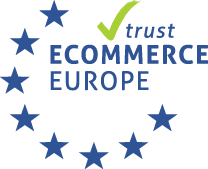Badges serve various purposes
The purposes of badges are very diverse. They originate from the military sector, but also security forces wear badges to indicate their status. In security, large and conspicuous badges are used, not least because they create an impression, show respect, and encourage compliant behavior. Military badges are also popular in the private sector. They are part of a specific clothing style inspired by the military, which can be adorned with various emblems. This creates very individual solutions that can attract a lot of attention. In addition to the classic dog tags, badges are also increasingly worn in daily clothing styles. ASMC offers badges in a wide selection. They are made of sturdy fabrics and can be easily sewn onto clothing. Metal badges allow for different attachment methods. Metal badges are standard equipment in the security sector. Large emblems are usually attached to the back, while a smaller badge over the chest also indicates affiliation with a security service. It is important that all members of a security service or military unit wear the same badges to symbolize unity. ASMC offers badges and other accessories in large quantities for ordering.
The "patches" are attached to clothing in different ways
Badges can be made of various materials. Depending on the material, they are securely attached to clothing. Many variants are made of very thick fabric. The emblem is usually sewn on. The badge is sewn directly onto the clothing in a position that is clearly visible. Furthermore, they can be attached with a Velcro fastener. The bottom side of the Velcro fastener is sewn onto the garment, while the badge also has a Velcro strip, allowing it to be easily and securely attached to the clothing when needed. Metal or steel badges are attached in different ways. They can be secured with straps that are threaded through small holes in the badges. Alternatively, metal badges can be stapled onto sturdy clothing.
Expert Tip: How to iron on a fabric badge?
To ensure that you enjoy the high-quality badge for a long time, we provide some useful tips and tricks for ironing on: The iron-on patches have a special coating on the back, allowing them to be easily ironed onto all cotton fabrics with an iron. It's best to do a short ironing test on the textile: Iron the spot where the iron-on badge is to be attached. First, of course, the badge must be placed in the desired position. Then, to protect the embroidery and the iron, place a cloth between the iron and the badge. The iron should be at a temperature of about 135°C. Iron the badge firmly for about 20 - 30 seconds. It is recommended to apply some pressure with the tip of the iron (especially at the edges of the iron-on patch). These values are average guidelines that should be adjusted individually to the heat permeability and thickness of the fabric. The above ironing instructions apply to normal cotton textiles and mixed fabrics with a higher percentage of cotton. We do not guarantee optimal adhesion of the fabric badge to other textiles made of 100% polyester (jerseys), etc. It is recommended to perform tests on more modern textiles in less visible areas beforehand.
Questions: Rank insignia
How many badges are there?
An exact number is not possible because there are many different badges for the most diverse and not only official military areas of application.
How are badges attached?
Badges can be attached to clothing and equipment in different ways: 1. Gluing with textile glue or a compact adhesive (not too thin so that it does not soak into the fabric too much). Advantages: The badge can be removed/repositioned. Disadvantages: Possible residues or discolorations on the fabric. 2. The badges have a needle on the back, with which the badge is stitched into the fabric. Advantages: The position of the badges can be changed, no damage to the fabric. Disadvantages: Possible falling off of the badge, needle breakage. 3. Self-adhesive badges are attached with the adhesive film on the back. Advantages: Easiest handling, the position of the badges can be changed. Disadvantages: Possible unintentional and accidental detachment of the badge.
What is the difference between laser cut and overlocked edge on fabric badges?
Overlocked edge means that the edge is overlocked with a thread. In contrast, laser cut means that the edge is cut out by laser so that no fraying can occur, as would be the case with cutting out with a knife or scissors.
Can badges be put in the washing machine?
With correct application, textiles can be washed together with fabric badges up to 50°C. However, metal badges should be removed before washing.




























































































